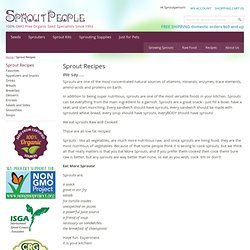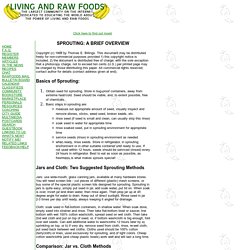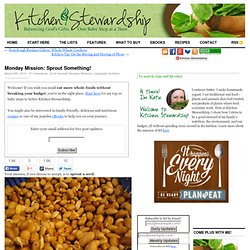

Get started with Sinatra. This article first appeared in issue 239 of .net magazine – the world's best-selling magazine for web designers and developers.

Most famous for Ruby on Rails, Ruby is fun, easy to use, easy to understand and easy to learn. Sinatra is a very different framework, which is written in under 2,000 lines of Ruby and doesn’t enforce model-view-controller (MVC) or ship with different tools, configuration files or scaffolding. Sinatra applications are often a single file that contain just enough to get the job done. The framework is best suited for smaller web applications, but if a large web app requires an API or web interface for some secondary functionality, then Sinatra is ideal. Building Backbone.js Apps With Ruby, Sinatra, MongoDB and Haml. Introduction In this post we're going to explore writing Backbone.js applications with a Ruby back-end.

To assist with this, we're going to use Sinatra – a DSL (domain specific language) for rapidly creating web applications in Ruby. Similar to the section in Backbone Fundamentals on writing an application with Node.js, our server-side language (Ruby) will be used to power an API whilst Backbone.js will be the client consuming it. What Is Sinatra? In the past, you've likely come across or used Ruby on Rails (RoR) – a popular web application framework for the Ruby programming language that helps organize applications using the MVC pattern. Whilst a very basic Rails application may require a more strict project structure (such as requiring the use of controllers, views and routing etc.), Sinatra doesn't require as many of these dependencies, sacrificing the helpers needed to connect to databases, tools to create forms or any of the other utilities Rails comes with out of the box.
Routes. 5 things you should know about sprouting at home (step-by-step guide) Most of my major life decisions have been based on something to do with food or wine.

For example, when it came time to choose a thesis topic for my food science degree, I decided to look at the bacterial populations in Blue Vein and Camembert cheese. Why cheese? Part of the study happened to included a ‘sensory evaluation’. Hello cheese tasting. During that long honours year, I spent lots of quality time in the food micro lab. Colette taught me a lot about the bacteria in sprouts.
And that’s pretty much how things were for me and sprouts over the years, until recently when I read a book called ‘Essential Eating, The Digestible Diet’ by Janie Quinn. The thing that really piqued my interest was Quinn’s comments on the nutritional benefits of sprouting. Essentially, the sprouting process turns grains and legumes into living plants with more nutrients available for our bodies to use. Sprout Recipes. Sprouts are one of the most concentrated natural sources of vitamins, minerals, enzymes, trace elements, amino-acids and proteins on Earth.

In addition to being super nutritious, sprouts are one of the most versatile foods in your kitchen. Sprouts can be everything from the main ingredient to a garnish. Sprouts are a great snack - just fill a bowl, have a seat, and start munching. Every sandwich should have sprouts, every sandwich should be made with sprouted wheat bread, every soup should have sprouts, everyBODY should have sprouts! We eat sprouts Raw and Cooked. These are all low fat recipes! Sprouts - like all vegetables, are much more nutritious raw, and since sprouts are living food, they are the most nutritious of vegetables. Eat More Sprouts! Living and Raw Foods: Sprouting: a brief overview. Copyright (c) 1995 by Thomas E.

Billings. This document may be distributed freely for non-commercial purposes provided 1) this copyright notice is included, 2) the document is distributed free of charge, with the sole exception that a photocopy charge, not to exceed ten cents (U.S.) per printed page may be charged by those distributing this paper. All commercial rights reserved; contact author for details (contact address given at end). Basics of Sprouting: Obtain seed for sprouting. Jars and Cloth: Two Suggested Sprouting Methods Jars: use wide-mouth, glass canning jars, available at many hardware stores.
Cloth: soak seed in flat-bottom containers, in shallow water. Comparison: Jar vs. Jar method is more versatile; can grow greens in the jar (e.g., 6-8 day old alfalfa greens), and the jar is less likely to mold than cloth for sprouts that require more than 2 days. Other Methods of Sprouting: What is the best time/length to eat sprouts? Grains and Similar Seeds Other Seeds Legumes. How to Sprout Legumes and Whole Grains. Welcome!

If you wish you could eat more whole foods without breaking your budget, you're in the right place. Start here for my top 10 baby steps to better Kitchen Stewardship. You might also be interested in family-friendly, delicious and nutritious recipes or one of my popular eBooks to help you on your journey. Your mission, if you choose to accept, is to sprout a seed.
I know many folks are getting into their gardening groove already, but that’s not exactly what a mean. Impact Ratings: Level of Commitment: Baby Steps There is a good body of research that shows that sprouting a seed before consuming it increases the nutrients and makes the whole experience a healthier one, and there’s generally less controversy (but not a lack of it) there than with the soaking grains research.